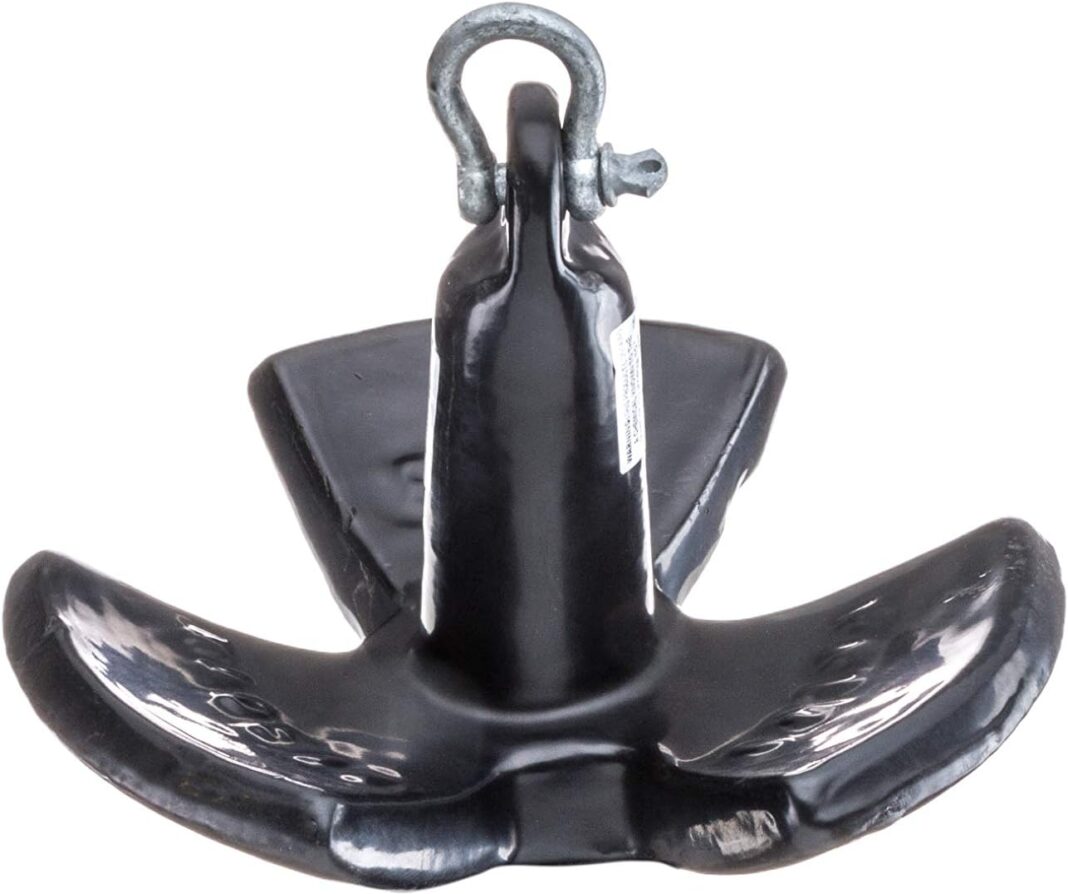Are you tired of your bass boat drifting away while you’re trying to fish? If you want to ensure a stable and secure boat during your angling adventures, it’s crucial to learn how to anchor your bass boat effectively. By following a few simple steps, you can keep your boat in place, allowing you to focus on reeling in that trophy bass. From choosing the right anchor to finding the perfect spot, this article will provide you with the essential tips and techniques to anchor your bass boat like a pro.
Choosing the Right Anchor
When it comes to anchoring your bass boat effectively, one of the first things you need to consider is the size and weight of your boat. Different anchors are designed to handle different boat sizes, so it’s important to choose an anchor that is appropriate for the weight of your boat. If you have a larger bass boat, you’ll need a heavier anchor to ensure it stays securely in place.
Another factor to consider when choosing an anchor is the bottom type of the body of water you’ll be fishing in. Different anchors work better in different bottom conditions, such as sandy, muddy, or rocky bottoms. It’s important to know the bottom type so you can select an anchor that will provide the best grip and hold in that particular surface.
Preparing the Anchor System
Before you head out on the water, it’s essential to inspect your anchor and rope to ensure they are in good working condition. Look for any signs of damage or wear, such as frayed rope or a rusted anchor, that could compromise the effectiveness of your anchor system. If you notice any issues, it’s best to replace them before heading out to ensure the safety and reliability of your anchor.
Once you’ve inspected your anchor, it’s time to attach it to your boat. Make sure you secure it properly and ensure that it is firmly attached using a reliable anchor line or chain. Additionally, preparing the rope is crucial. Ensure that it is untangled and ready to deploy when needed. Coiling the rope neatly and securing it in a storage locker or compartment will help prevent any tangles or accidents on board.
Consider using an anchor reel, which can make dropping and retrieving the anchor much easier. An anchor reel provides a controlled release and retrieval, allowing you to anchor your bass boat more efficiently and without the hassle of handling a long length of rope manually.
Finding the Ideal Anchoring Spot
To effectively anchor your bass boat, it’s important to find the ideal spot. One of the key considerations is the water depth. You’ll need to know how deep the water is in order to choose an appropriate anchor length and properly set it. Using a depth finder or referring to nautical charts can help you determine the water depth accurately.
In addition to water depth, finding structure and cover in the water is crucial when selecting an anchoring spot. Bass are often found near structures such as submerged trees, rock piles, or weed beds. By anchoring close to these areas, you increase your chances of finding and catching bass. Look for areas with visible structure or use technologies like fishfinders to locate potential hotspots.
While finding structure is important, it’s equally vital to assess currents and wind conditions. Strong currents can put additional strain on your anchor, and strong winds can cause your boat to drift. Take into account the direction and strength of the currents and winds to ensure that you anchor in a spot where your boat will remain stable.
When choosing an anchoring spot, it’s essential to take safety into consideration. Avoid shallow areas where your boat could get stranded or damaged. Also, be mindful of any navigation restrictions or areas where anchoring is prohibited. By anchoring safely and responsibly, you can enjoy your fishing adventure without any unnecessary risks.
Dropping and Setting the Anchor
Once you’ve found your ideal anchoring spot, it’s time to drop and set the anchor. Approach the spot slowly and carefully to avoid disturbing the water too much and scaring away any nearby fish. Slowly release the anchor, allowing it to descend gradually to the bottom. This controlled release will help ensure that the anchor sets properly and provides a secure hold.
Once the anchor is fully deployed, let it settle on the bottom. Avoid pulling on the anchor line too quickly, as this could cause the anchor to drag or release. Give the anchor enough time to dig into the bottom and establish a secure hold. You can test the holding by gently pulling on the anchor line to feel for resistance.
Securing the Anchored Boat
To secure your anchored boat, consider tying off to a cleat or pylon. This will ensure that the boat remains in place and doesn’t drift. Make sure the cleat or pylon is sturdy and capable of withstanding the strain from the anchor line. Double-check the knot or cleat hitch to ensure it is secure before leaving your boat unattended.
Using an anchor buoy is another option for securing your boat. The buoy is attached to the anchor line, making it easier to locate and retrieve the anchor when it’s time to leave. The buoy also serves as a visual marker, letting other boaters know that your boat is anchored and preventing them from accidentally running into it.
For added stability, consider using additional lines such as stern lines or shore lines. These lines can minimize boat swinging caused by wind or current. By tying off to nearby trees or sturdy objects on the shore, you can greatly reduce the movement of your boat while anchored.
To protect your boat from damage, consider placing fenders or bumpers along the sides. These inflatable or foam cushioning devices act as buffers, preventing your boat from rubbing against docks, other boats, or underwater structures. They can save you from potential costly repairs and maintain the pristine condition of your bass boat.
Retrieving the Anchor
When it’s time to retrieve the anchor and move to another fishing spot, following the correct procedure is important. Approach the anchor slowly and carefully, maintaining control of the boat without causing excessive splashing or noise. This will prevent disturbances in the water that could scare away fish in the vicinity.
To release tension from the rope, you can either use a winch or slowly let out the rope manually. By gradually releasing the tension, you’ll make it easier to pull the anchor up without straining yourself or potentially damaging any of the boat’s equipment.
Once the tension is released, begin pulling the anchor up gradually. Avoid pulling too quickly or forcefully, as this could send the anchor flying up and potentially cause injury. Be patient and maintain a steady pace as you bring the anchor to the surface.
When the anchor is fully retrieved, secure it properly for storage. Rinse off any debris or saltwater that may have accumulated on the anchor. Allow it to dry completely to prevent rusting and damage. Store the anchor and anchor line in a designated compartment or storage area, ensuring that they are neatly coiled and easily accessible for future use.
Maintaining Your Anchor System
To ensure the longevity and reliability of your anchor system, proper maintenance is crucial. Regularly clean and inspect the anchor to remove any dirt, mud, or debris that may have accumulated. This will prevent corrosion and ensure that the anchor continues to function effectively.
Inspect your anchor rope regularly for any signs of wear or damage. Frayed or worn-out rope should be replaced to prevent any accidents or unexpected failures while on the water. It’s always better to be safe and proactive when it comes to the integrity of your anchor line.
Check and grease any moving parts on your anchor, such as the hinge or swivel. Applying a small amount of marine-grade lubricant will help prevent corrosion and ensure smooth operation. This simple maintenance step can significantly extend the lifespan of your anchor and improve its overall performance.
When storing your anchor, make sure it is kept in a cool, dry place to prevent rust or other damage. Avoid storing it near other metal objects that could potentially scratch or dent the anchor. By taking care of your anchor and storing it properly, you can ensure that it remains in optimal condition for your next fishing adventure.
Safety Considerations
Safety should always be a top priority when anchoring your bass boat. Here are a few safety considerations to keep in mind:
- Have life jackets for all occupants on board. It’s essential to have enough personal flotation devices (PFDs) for everyone, especially in case of an emergency.
- Be cautious of water conditions. Keep an eye on changing weather patterns and water conditions that could affect your safety. Strong winds, rough waters, or sudden storms can all pose hazards while you’re anchored.
- Avoid anchoring in restricted areas. Familiarize yourself with any local restrictions or regulations regarding anchoring. This ensures that you abide by the rules and maintain a safe boating experience for everyone.
- Have a means of communication. It’s important to have a reliable communication device, such as a marine radio or a cellphone, with you while on the water. In case of an emergency, you can quickly reach out for help or assistance.
By prioritizing safety and taking necessary precautions, you can enjoy your bass fishing adventure with peace of mind.
Tips and Tricks
Here are some additional tips and tricks to enhance your anchoring experience:
- Practice anchoring in different conditions. By practicing anchoring techniques in various weather and water conditions, you’ll become more proficient and confident in securing your bass boat effectively.
- Use a GPS or fishfinder for precision. Utilize technology to your advantage by using GPS or fishfinder features to pinpoint the ideal anchoring spots.
- Consider using multiple anchors. In certain situations where stability is critical, using multiple anchors can ensure that your boat remains secure and minimizes drifting.
- Avoid anchoring too close to other boats. Give other boaters ample space by anchoring a reasonable distance away. This not only maintains their privacy but also prevents any potential accidents or collisions.
Final Thoughts
Anchoring your bass boat effectively is a crucial skill that can greatly enhance your fishing experience. By following the steps outlined above, you can ensure that your boat remains securely in place, allowing you to focus on catching bass and enjoying your time on the water.
Remember to adapt your anchoring technique to different situations and always stay updated on the condition of your anchor system. Prioritize safety at all times and take the necessary steps to maintain and care for your anchor properly. By doing so, you can enjoy a safe and enjoyable boating adventure every time you head out to fish.


